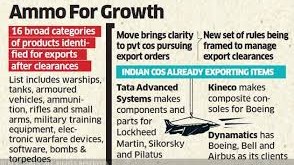Concerns over climate change have prompted governments to start focusing on finding alternative sources of energy. As such, EVs, and the battery technologies associated with them, have gained an increasing importance in recent years. In an effort to reduce greenhouse gas (GHG) emissions, governments have adopted various strategies to spur …
Read More »Xi Jinping Calls for High-Tech ‘Smart System’ to Boost China’s Border Defence
Introduction: Technology at the Core of China’s Defence Modernisation President Xi Jinping has issued a renewed call to modernize China’s border security architecture through the deployment of high-tech “smart systems” to confront what he described as “new opportunities and challenges” in national defense. The remarks were delivered during a high-level …
Read More »Forging the Future Battlefield: Key Insights from the 2024 Emerging Technologies for Defense Conference
At the 2024 Emerging Technologies for Defense Conference & Exhibition held from August 7–9 in Washington, D.C., a clear message resonated across sessions: the pace of battlefield innovation is accelerating, and Western militaries must adapt or risk obsolescence. The convergence of commercial ingenuity with military imperatives is collapsing traditional development …
Read More »Navigating the Cosmos: The Quest for AI Regulation in Space and Satellite Operations
The fusion of artificial intelligence and space technology is reshaping the boundaries of human achievement. From autonomous satellite networks analyzing climate patterns in real time to AI-guided rovers exploring the Martian surface, intelligent systems are becoming indispensable to both commercial and governmental space missions. However, while AI technology advances at …
Read More »BioE3: How India’s Biotech Strategy Aims to Leapfrog the U.S., EU, and China in the $4 Trillion Bioeconomy Race
Biotechnology is fast becoming the central engine of industrial transformation. As synthetic biology, genome engineering, and microbial manufacturing converge with climate goals, the 21st-century global power dynamic is shifting toward nations that can scale biology for infrastructure, food systems, materials, and energy. In this geopolitical context, India’s BioE3 policy—focused …
Read More »Beyond the Horizon: Rethinking Global Security in the Age of Exponential Technology
Beyond the Horizon: How Exponential Technologies Are Redefining Global Security From AI and quantum to biology and climate tech — explore how exponential innovation is transforming global security, creating both unprecedented opportunities and complex risks. Across the globe, communities are facing unprecedented pressures as environmental, political, and technological forces intersect. …
Read More »Accelerating the Global Bioeconomy: Innovation, Challenges, and Pathways Forward
Accelerating the Global Bioeconomy: Engineering the Next Industrial Revolution How AI, Quantum, and Biology Are Reprogramming the Planet’s Economy Introduction: The Bioeconomic Imperative The global bioeconomy has evolved from a visionary concept into an urgent necessity. As humanity confronts the intertwined crises of climate change, resource scarcity, and food insecurity, …
Read More »Beyond the Lab: How DARPA’s New Accelerator Network Is Fueling America’s Tech Dominance
The Bridge from Battlefield to Boardroom For over six decades, DARPA (Defense Advanced Research Projects Agency) has quietly powered innovations that shaped the modern world—from the internet and GPS to stealth aircraft and mRNA vaccines. Yet despite its remarkable research output, the agency has long struggled to consistently transition …
Read More »India’s Defence Exports Soar: A Strategic Leap Toward Global Leadership
Introduction: From Importer to Exporter—A Paradigm Shift India, the world’s fastest-growing major economy, is on track to become the third-largest economy within the next five years, a testament to its expanding global stature. However, economic growth alone is insufficient for a nation with soaring ambitions; it must also develop a …
Read More »China’s Top 30 Science & Tech Challenges: From Digital Humans to Deep-Sea Power Stations
As global scientific competition intensifies, China has unveiled an ambitious roadmap of 30 frontier science and technology challenges. These challenges span everything from fundamental research to next-generation innovations that could reshape industries and global geopolitics. China has identified 30 critical research areas that dominated scientific, engineering, and industrial discussions in …
Read More » International Defense Security & Technology Your trusted Source for News, Research and Analysis
International Defense Security & Technology Your trusted Source for News, Research and Analysis



